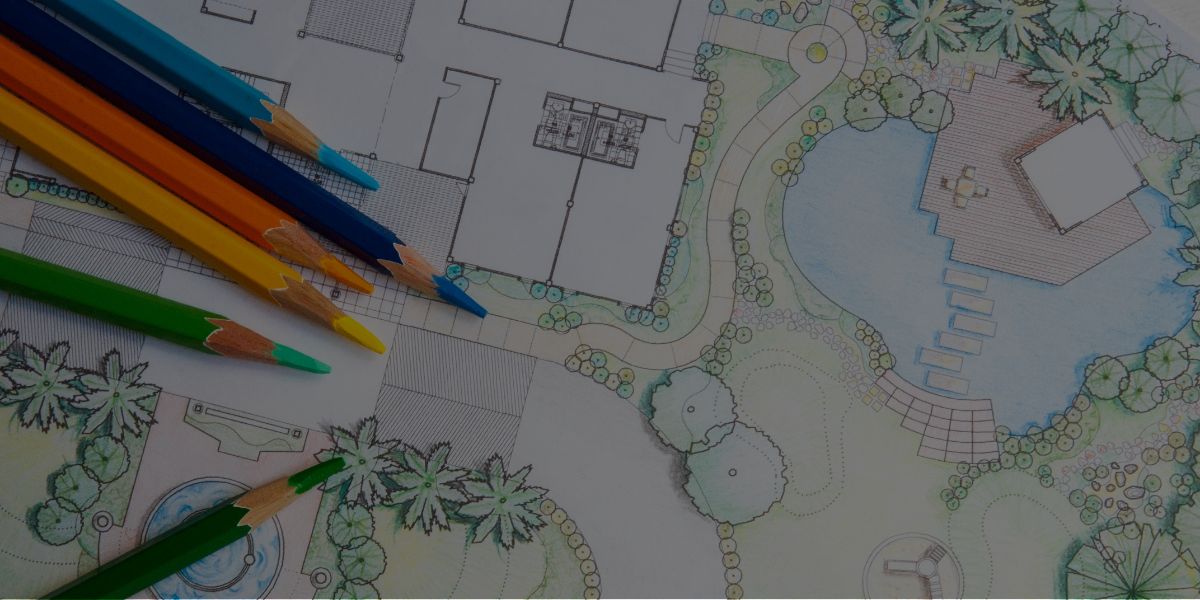Are you ready to know how to become a landscape artist? Then look no further, because you’ve come to the right place!
We’re willing to bet that you’ve got a ton of questions about this new, exciting career path. Luckily, we’ve answered ALL of them for you in this article.
So, sit back and relax. In less time than it’d take you to watch an episode of your favorite Netflix show, you’ll learn everything needed to start the career of your dreams!
Is Landscape Design a Good Career?
Before we begin, you need to know if it’s worth it to start a career as a landscape artist in the first place. After all, if it won’t pay the bills or fulfill you, what’s the point, right?
Luckily, in terms of demand, this is a GREAT job to pursue! Right now, in fact, many landscape designers are actually booked solid through 2022 already!
But what about the job itself? It’s important to go into this venture with a clear understanding of what to expect. So, let’s start by taking a look at the job description of a landscape artist in a nutshell…
Job Description
As a landscape designer, here are the sort of tasks you can expect to do on the job:
- Conducting initial client consultations and follow-up appointments;
- Securing and working with landscape contractors;
- Visiting the client’s site;
- Developing functional landscape designs;
- Helping clients improve curb appeal;
- Successfully implementing the concepts of “spatial planning” and the “outdoor room”;
- Planning the hardscape and softscape of a landscape site;
- Working with living plant life;
- Creating sustainable, environmentally-friendly landscape design;
- Developing landscape drawings and diagrams;
- And SO much more!
So, if you’re the type of person who loves getting creative, making outdoor spaces beautiful, and knowing you’re making a direct impact on your clients’ lives, you should definitely get started as a landscape artist!
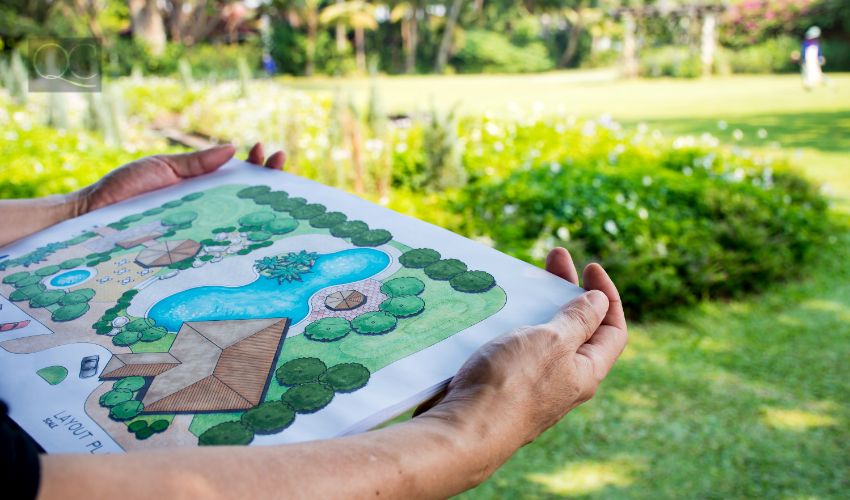
Salary Expectations as a Landscape Artist
Next, if you want to know how to be a landscape artist, it’s worth knowing how much you can expect to make from this career path. Here are some average salary ranges for landscape artists/designers, based on location:
- United States: Between $40,000 USD to $66,000 USD per year (Source: PayScale)
- Canada: Between $37,000 CAD to $97,000 CAD per year (Source: Glassdoor)
- United Kingdom: Between £20,000 GBP to £66,000 GBP per year (Source: PayScale)
- Australia: Between $80,000 AUD to $140,000 AUD per year (Source: Salary Expert)
- New Zealand: Between $69,000 NZD to $$120,000 AUD per year (Source: Salary Expert)
The Added Value of an Internationally-Recognized Certification
When you get a proper education, you’re investing time, effort, and money into your subject-matter expertise. As a result, you earn the right to price your landscape artist services in a way that properly reflects that.
Not to mention, if your design business offers other types of services, too, you can raise those rates as well!
Moreover, having a credible landscape design certification will do wonders in terms of helping you stand out from the local competition. Setting yourself apart from the crowd will not only elevate your business – it’ll definitely help you earn a better income!
Did you know that ALL of QC Design School’s courses, certifications, and designations are internationally-recognized and accredited? Check out the full list of design courses we currently offer here!
What is The Difference Between a Landscape Architect and a Landscape Designer?
You may have seen these two titles used interchangeably. But the fact is, they’re two completely different jobs. So, as you work towards being a landscape artist, it’s crucial that you know exactly which title you want to have for yourself.
Landscape Architect
To be a landscape architect, you’ll likely need post-secondary education from a university. Typically, this will be in the form of a Bachelor’s degree or a Master’s. Additionally, you may also need to be licensed by your State/location.
Landscape architects can handle both commercial and residential projects, but they’re usually larger-scale in size. Projects could involve doing landscape design for public gardens, campuses, etc.
Landscape Designer
Since landscape designers technically don’t need an accredited license, post-secondary education from a college or university isn’t mandatory for this profession. Of course, you’ll need to draw from the same type of skill-set as a landscape architect, so getting professional landscape design training is still a MUST!
The biggest difference between this job and that of a landscape architect is that as a landscape designer, you’ll usually be working on smaller-scale projects (such as residential projects for homeowners).
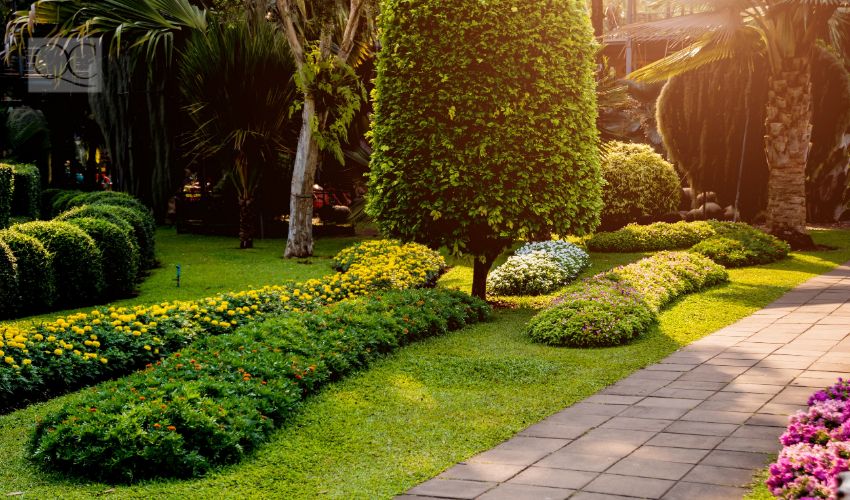
What Skills Do You Need to Be a Landscape Artist?
In order to be a landscape artist, there are certain skills you’ll need to have if you want to truly thrive. For instance, you’ll need to:
- Be artistic;
- Be creative;
- Possess manual dexterity;
- Pay attention to detail;
- Have strong concentration skills;
- Be self-disciplined;
- Know how to acquire and retain clients;
- Network with others in the industry;
- Know how to run your own landscape design business, etc.
If this sounds like you, then guess what? You should absolutely start a career as a landscape artist, because it’ll be the PERFECT fit for you, your skills, and your goals!
What Degree Do You Need to Be a Landscape Artist?
Okay, so as we discussed earlier, you’ll probably need either a Bachelor’s or a Master’s degree in order to work as a landscape architect. However, you don’t need a degree to be a landscape designer.
But remember: I also mentioned that proper training is still essential.
Why is this? Simply put, prospective clients will never want to hire a landscape designer who can’t prove that they know what they’re doing. I mean, would you?
Landscape services aren’t cheap. Furthermore, they play a huge role in the overall look and appeal of a home. Booking the wrong person can lead to disastrous results! As such, clients will only want to hire legitimate experts that they can trust to deliver top-quality results.
If you want to have a truly successful career, your best bet is to enter the field with a reputable, accredited education under your belt. In a little bit, I’ll delve into this further and break down the sort of landscape design course you should be enrolling in.
Okay, now that you know what it takes to be a landscape artist, how can you actually start your career as a landscape artist?
The following 5 steps will walk you through the process, so you can get started ASAP!
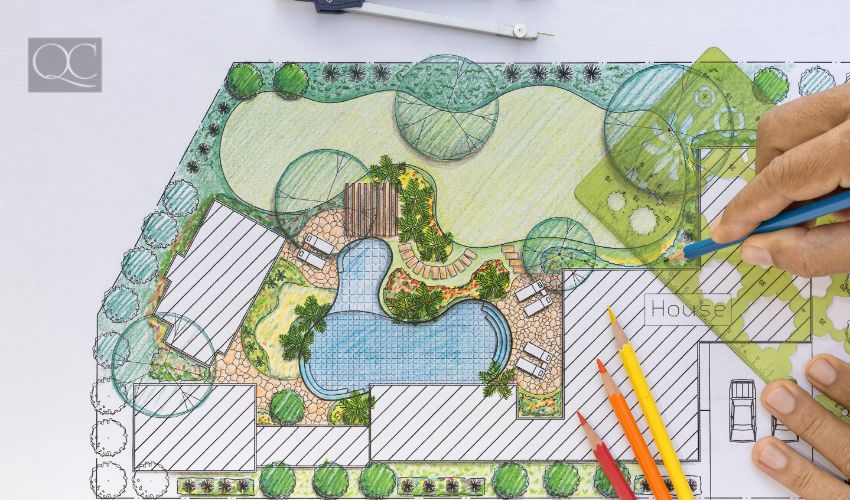
Step 1. Learn About What a Landscape Artist Does Day-to-Day
By now, you should have a pretty good idea of what a landscape artist does, since we covered this earlier when looking at their job description and typical responsibilities.
But if I were to ask you, “What does a typical day look like for a landscape artist?”, would you know how to answer that question?
If not, then there’s definitely more digging you can do! Luckily, there’s endless information out there at your disposal. Read some blog articles and publications on the subject. Find landscape artists on social media and see the sort of content they’ve been posting on their channels.
If you look in the right places, it won’t take long before you have a crystal-clear understanding of what a landscape artist does on a day-to-day basis. And, of course, then you’ll be able to decide with absolute certainty whether these are things YOU’D like to be doing each day of your career.
Step 2. Take a Course on How to Become a Landscape Artist
Alright, by this stage, it’s time to decide where you want to get your landscape design training! (At this point in the game, I don’t think I need to explain any further why a professional education is in your best interests, right?)
In-Person vs. Online Schooling
First thing’s first: decide whether you want to get trained in-person or online. The obvious perk of in-person training is that you’ll be in the same physical environment as your peers and instructor. That said, keep in mind that brick-and-mortar schools are always more expensive.
Moreover, you’ll need to work your schedule around the school’s schedule. This means you’ll never have the wiggle room to miss a class. Plus, you’ll have to follow the same pace as everyone else in your course. So, if the program is 6 months long, you won’t be able to graduate any sooner than that.
Online schools, on the other hand, often offer the freedom of self-paced learning. Therefore, you can work on your course whenever YOU want to – and graduate in as little or as much time as you need. Plus, online schools are a lot more affordable, since there are no physical campuses to maintain.
QC Design School’s Landscape Design Course
If you want to become a landscape artist, then QC Design School‘s Landscape Design Course will provide you with everything you need to make this dream a reality!
For starters, it’s worth knowing that this 5-unit program is 100% self-paced and done online. Starting on the day you enroll, you’ll have a full 2 years to finish the course. But if you were to devote a mere 1-2 hours per week on your studies, you could graduate and earn your International Landscape Design Professional (ILDP) certification in as little as 3-6 months!
As a student of this course, you’ll discover EVERYTHING you need to know about the landscape industry and how to be a successful landscape designer. What’s more – you’ll also acquire thorough business knowledge that’ll help you launch your very own design business, get it off the ground, and make a name for yourself in the industry.
Ready to learn more about QC’s Landscape Design Course? Find all of the details here and get started today!
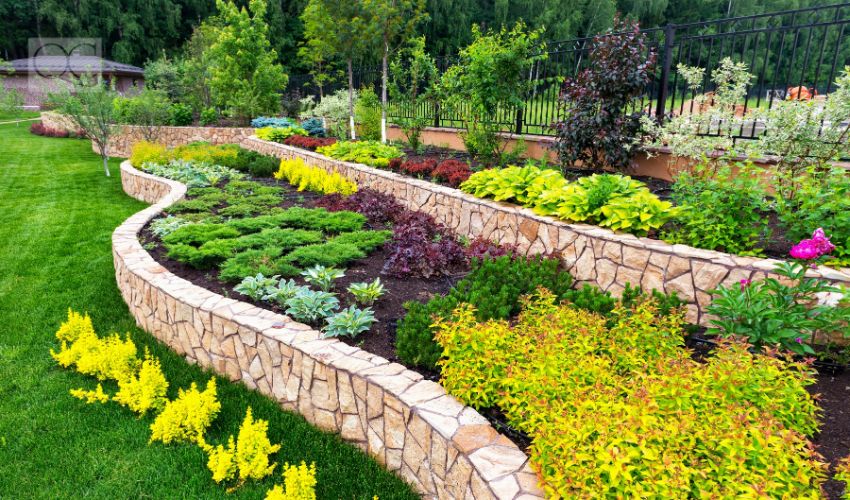
Step 3. Decide on Your Career Path
Once you’ve added a reputable certification and designation to your resume, it’s time to sit down and really think about what you want your career to look like. What kind of landscape artist do you want to be? What are your goals? How will you go about achieving them?
Sit down, grab a pen and paper, and trying answering the following brainstorming questions:
- Do you want to start your own landscape design business, or join an existing team/company?
- If you wish to start your own business, what do you want this business to look like? (E.g. What will you name it? What will your brand be?)
- Would you like your business and/or skill-set to have any particular niches? (I.e. outdoor rooms, backyard design, plant life designs, etc.)
- Who do you want your target clientele to be?
- How can you market your business services to these potential customers?
- In what ways can you get your name out there and network?
- Do you plan to offer any additional home design services (i.e. interior decorating, home staging, etc.), or strictly stick to landscape design?
It’s important to approach your career with a game plan in mind. Going in blind will drastically decrease your chances of success. The better prepared you are, the better your chances will be of leaving a lasting mark on the design industry!
Step 4. Build Your Landscape Design Portfolio
When you first begin your career as a landscape artist, you likely won’t have any projects under your belt. This means you won’t have much yet, in terms of a professional design portfolio.
Until you have these things, it’s going to be challenging to book real, paying clients, as they won’t be able to see visual proof of your landscaping abilities. There will be no raving client testimonials for them to read, or high-quality photos demonstrating how great you are at what you do.
This can feel like a bit of a Catch-22 at the beginning of your career. You need projects and clients in order to build your portfolio – but you need a portfolio in order to book projects and clients. So, what exactly are you supposed to do?
The Value of Providing Complimentary Services
As you start your career, one suggestion is to provide free services – at least, for a limited time. Although it’s not exactly the most financially attractive move, it’s definitely is a smart business move. When you provide complimentary landscape artist services, you’ll be able to gather high-quality images to use in your portfolio.
Furthermore, you’ll also be able to gather positive client reviews that can be used on your website, in newsletters, on social media, etc. Plus, the people you give these free services to could wind up referring you to people they know – which could eventually lead to legitimate, paying jobs!
Here are a few ways you can provide freebies in order to build your landscape design portfolio:
- Offer landscape design services to friends and family;
- Use your own yard to implement (and photograph) different landscape design techniques you’ve learned during your certification training;
- Take part in a styled photoshoot;
- Lend your landscape artist expertise to a not-for-profit and/or charitable cause.
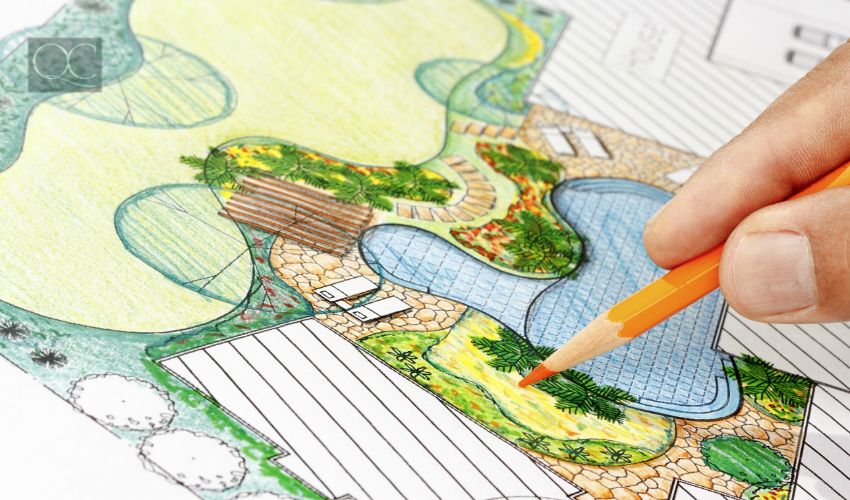
Step 5. Start Marketing Your Landscape Services!
Once your business is officially launched, you’re confident in the services you’ll be providing, and you have a portfolio you’re proud of, it’s time to get your business seen by the masses. So, how can you go about doing this?
Tip #1: Build a Business Website
Firstly, you’ll want to set up an official website for your business. Your domain name should be the same as your registered business name. Your website should look professional and clean, rather than clumsy and unorganized. On this site, ensure that your design portfolio is easy to find, since prospective clients will want to browse it.
Additional information you should include on your website is:
- An “About Me” page that tells viewers more about you, your qualifications, and your certification(s)
- A list of the services you offer (as well as service rates, if you wish to publicly provide those as well)
- Client testimonials
- Contact information
- Links to all of your social media channels
- The option of online booking
- Important policies and/or clauses (e.g. cancellation policies, refund policies, etc.)
Tip #2: Set Yourself Up on Social Media
Everyone uses social media these days, and it’s undoubtedly a great way to meet others in the industry and secure clients. Facebook, Instagram, Twitter, Pinterest TikTok, and YouTube are just some of the popular platforms you can establish a presence on.
Here are some handy tips to keep in mind when setting up your social media accounts:
- Your handles should – as often as possible – be the same as your registered business name.
- Your website will provide links to your social media accounts, so your social media channels should likewise link viewers back to your website as well.
- The aesthetic of your social media platforms (i.e. what you post, how you speak, etc.) should always accurately reflect your business’s brand.
- Post often – and always do your best to share original content (Tip: If you find it easier, utilize scheduling apps such as Later or Hootsuite to post ahead of time and/or in bulk.)
- Try to find a fresh, new angle for your posts. You don’t want to be the same as all the other landscape artists out there, or your channel(s) won’t be as memorable!
- Follow others in the industry that you’d like to connect with, and regularly leave encouraging comments on their posts. This will increase your chances of them doing the same with you.
- Whenever someone engages with your posts and/or messages you, make sure to get back to them.
- Use your social media channels as another way to showcase your portfolio and promote your business!
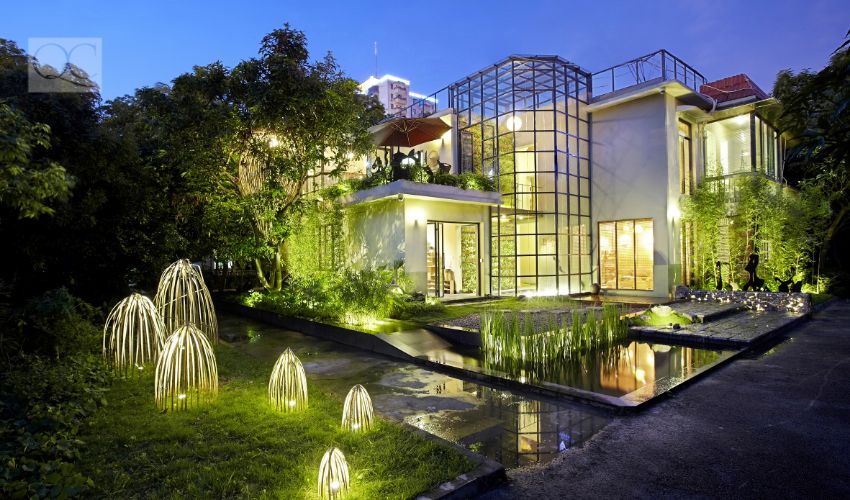
Tip #3: Network, Network, Network
Networking will be your GREATEST asset as you become a landscape artist. In fact, I’d even go as far as to say that it’s one of the single smartest ways to advance your career. This is because the design industry is a pretty close community.
As a result, it won’t take long for you to meet and/or become acquainted with the other landscape artists in your local area. You’ll also get to know suppliers, contractors, other types of designers.
Now, remember: just because other landscape artists are technically your “competition” does NOT mean they aren’t also your allies. It’s important for you to establish positive connections with others in the industry – your competitors included.
The reason for this is simple. When you network, you’re increasing your chances of future collaborations, as well as getting client referrals. Other landscape artists might even send potential clients your way, if their own schedule is completely booked (and so long as they trust that you’d do the same for them).
At the end of the day, you’ll have a much more fruitful career if you network with other designers and landscape artists!

